The spectacular posters that tsarist Russia used to drum up support for its war effort.
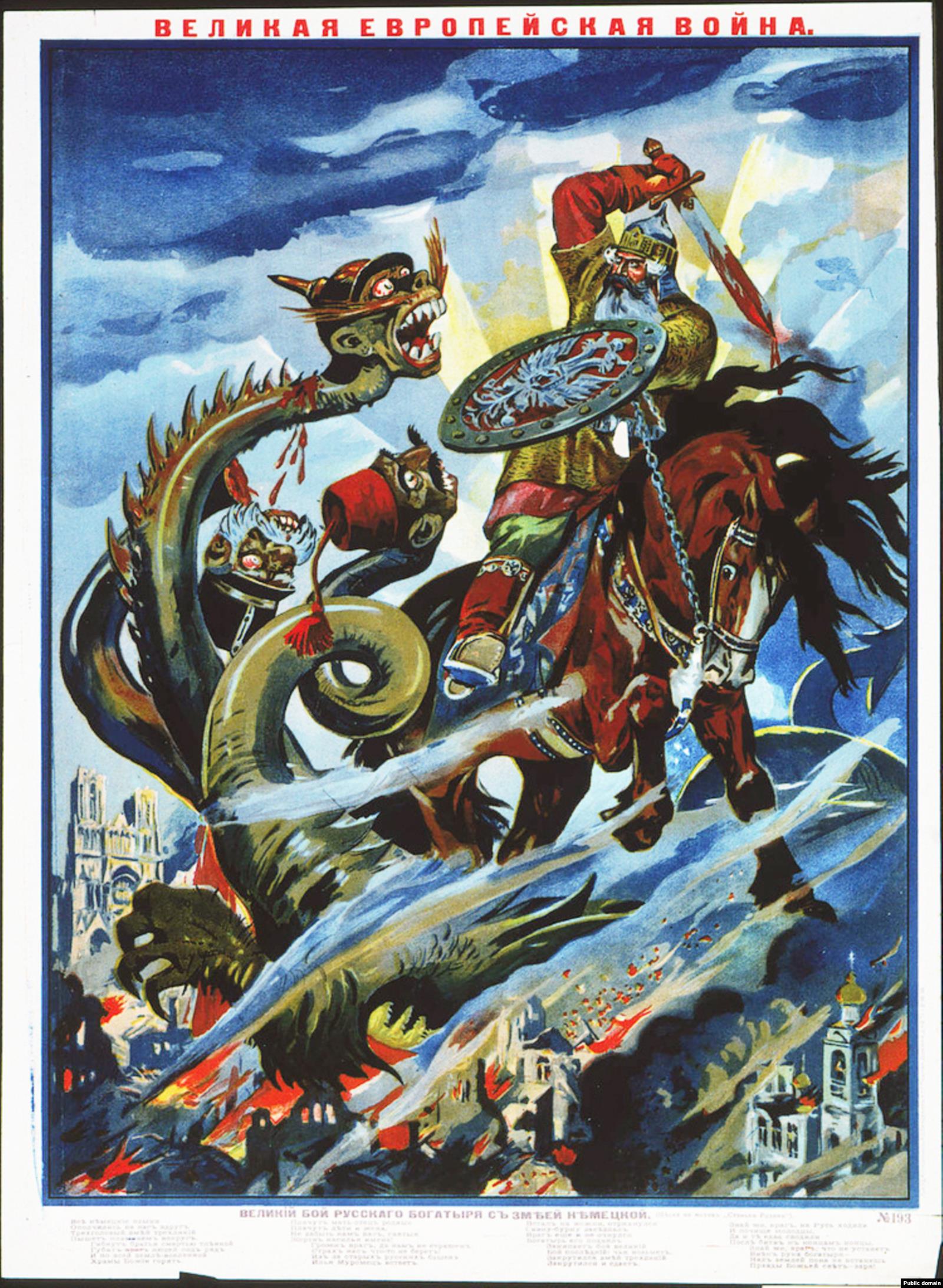
A Russian knight hacks at a serpent depicting the leaders of Germany and the Ottoman and Austro-Hungarian empires.
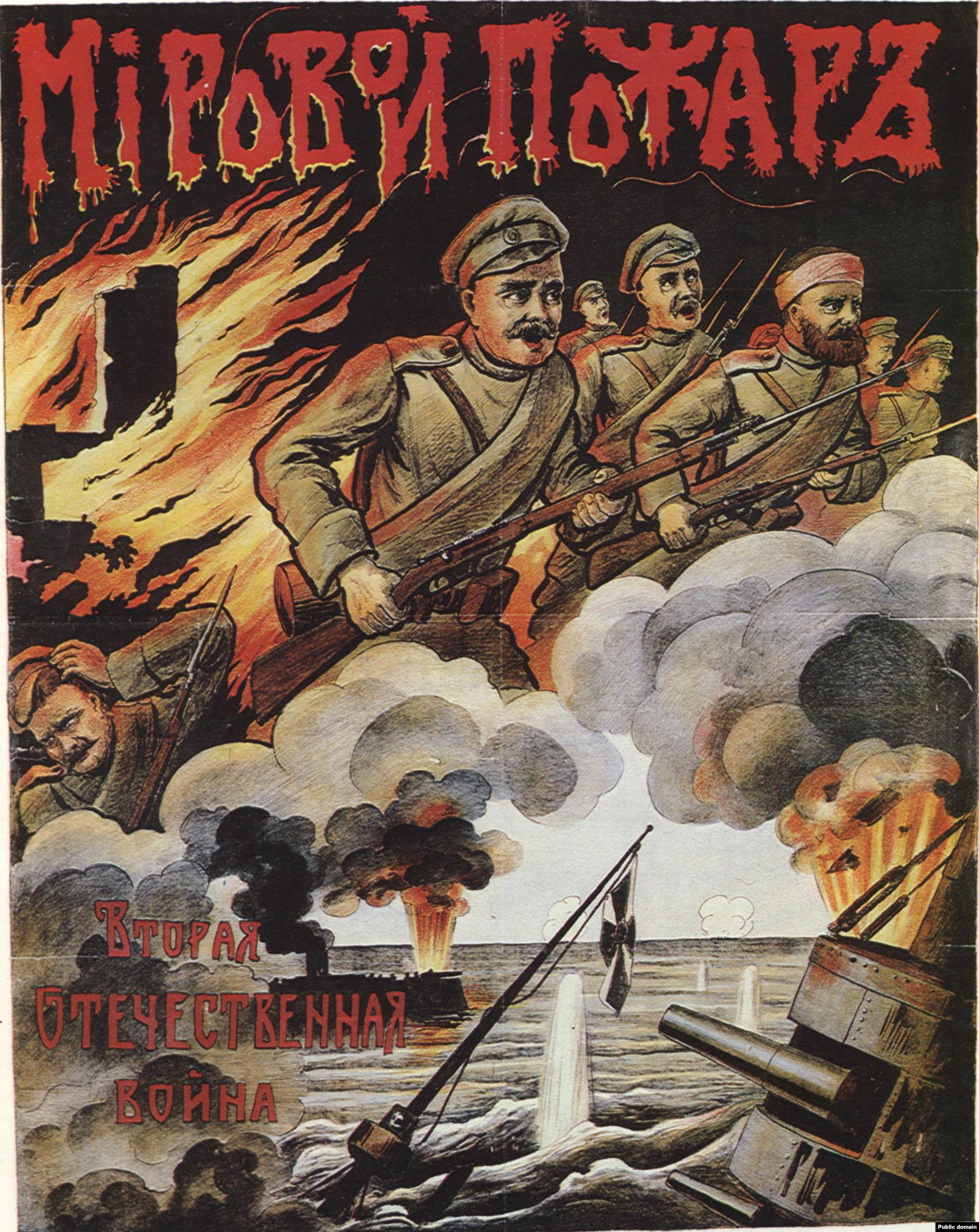
A poster portraying the “Second Patriotic War” as World War I was known in Russia. (Napoleon’s 1812 invasion was Russia’s first “patriotic war.”)
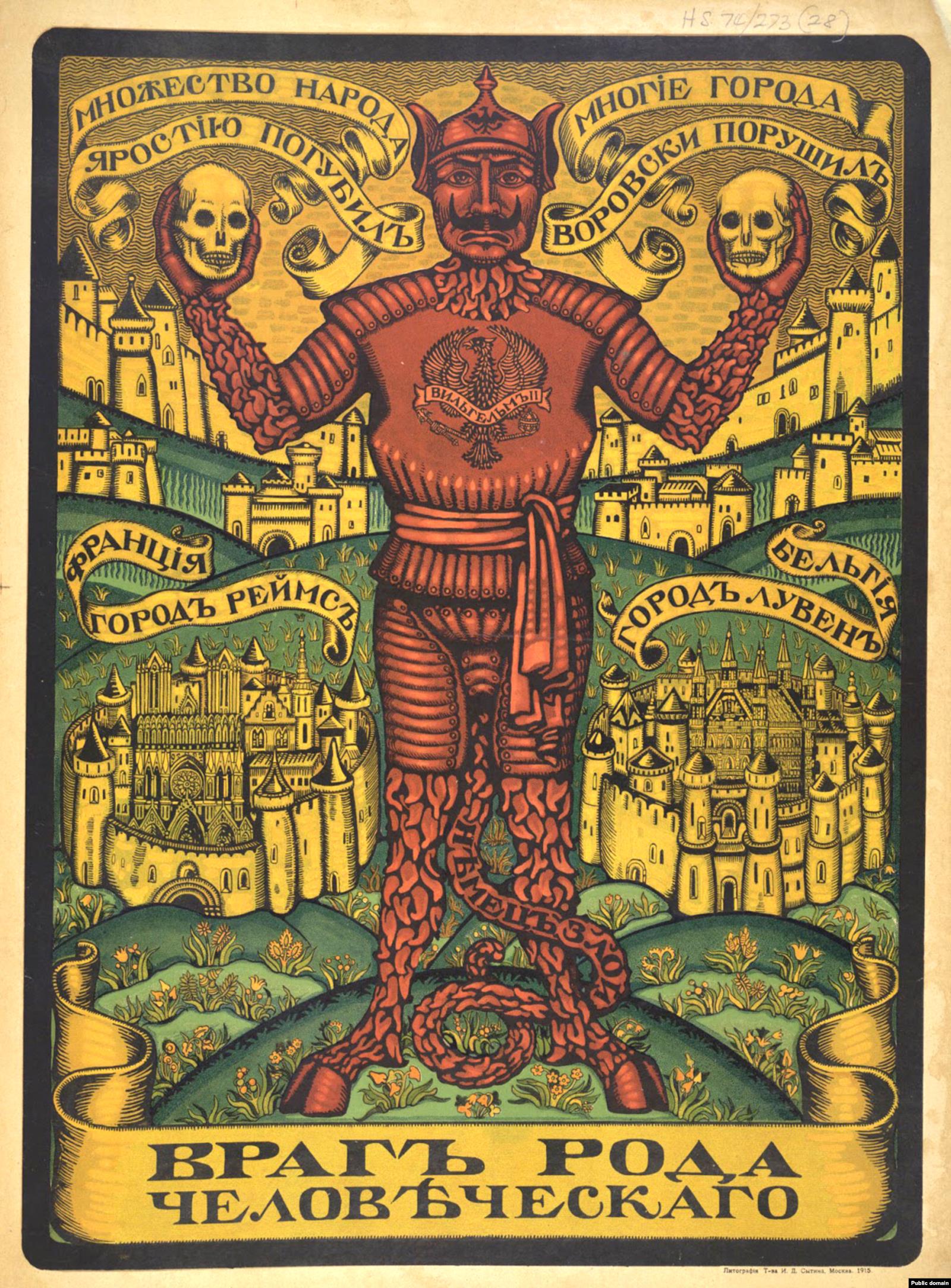
Germany’s Kaiser Wilhelm II demonized in a poster proclaiming him “The Enemy Of Humankind.” In an age before radio or television, illustrations like this were used by all sides in the war to dehumanize the enemy.
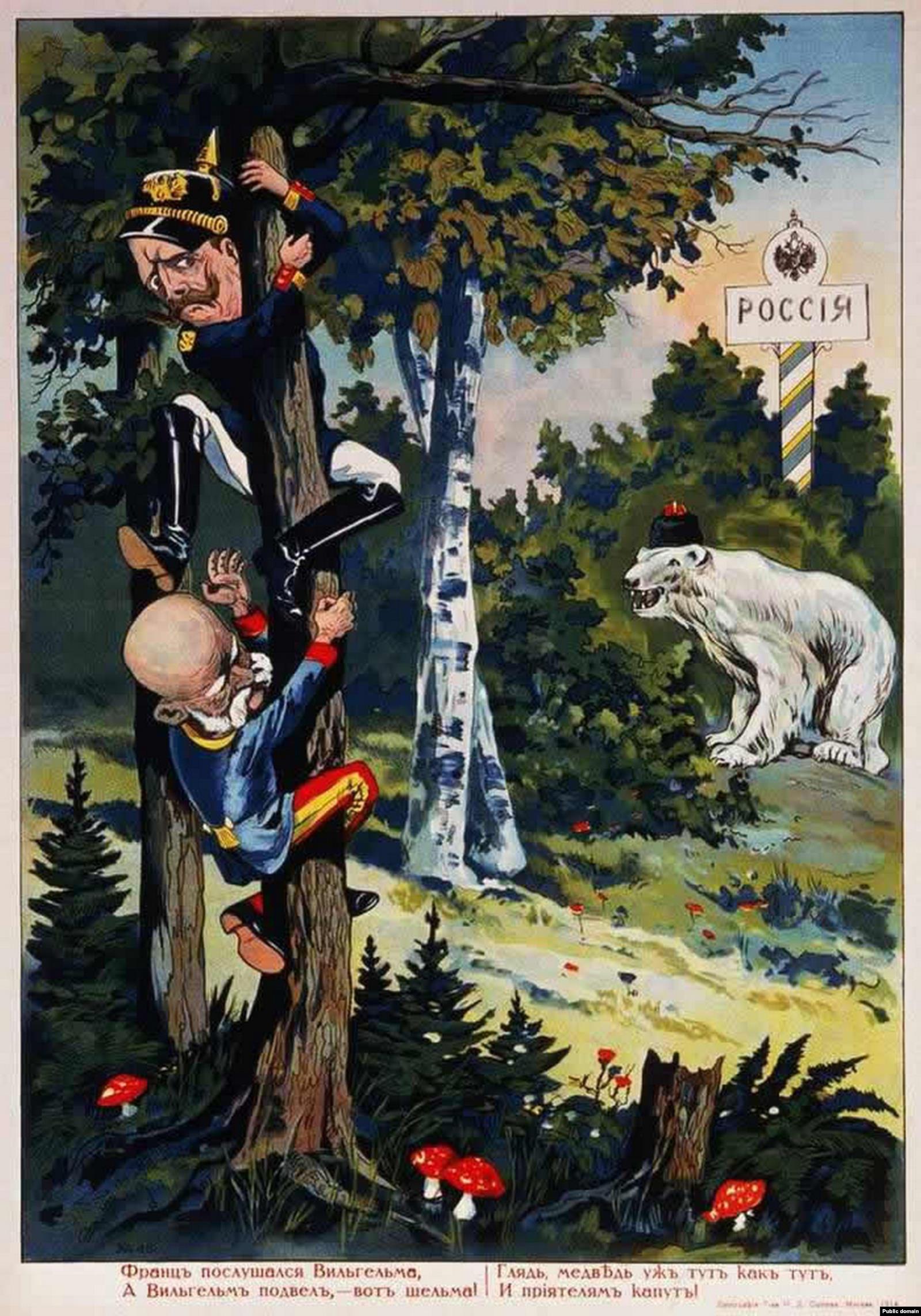
Another purpose of propaganda posters in WWI was to raise morale at home, regardless of the realities at the front. Here Wilhelm and Franz Joseph, the emperor of Austria, are sent scurrying for safety by Russia, depicted as a polar bear in a Cossack hat.
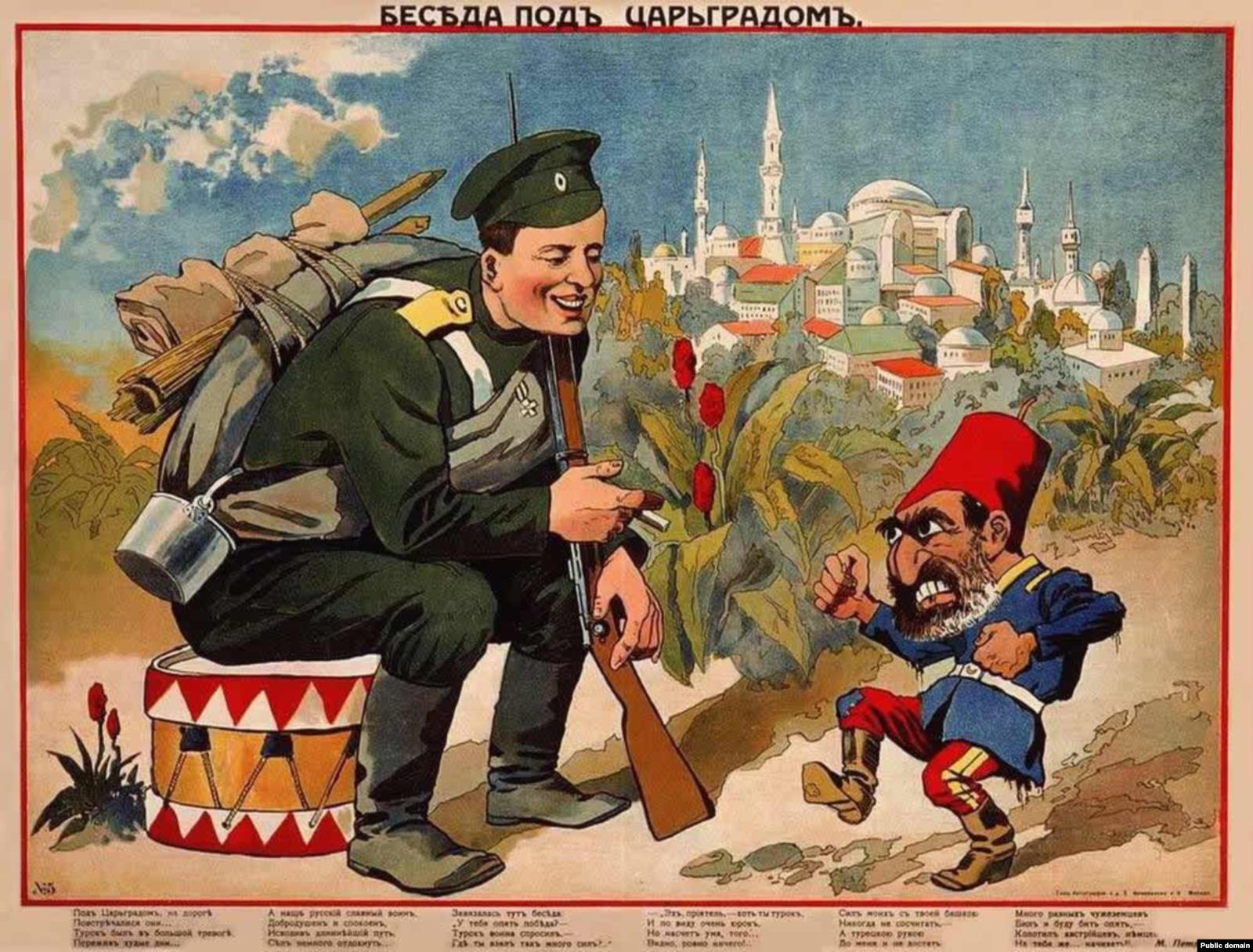
A Russian soldier laughing at an Ottoman Turk. Before being pitted against each other in WWI, bad blood between Russia and Turkey dated back to the 16th century.

This illustration portrays the conflict as a squabble between national foods: A German sausage (center) cooks up Italian macaroni, while Hungarian sausages (left) are crushed by a pot of Russian buckwheat. Looking on is a cut of “hot and slippery” English roast beef, an American dove, and some French champagne.
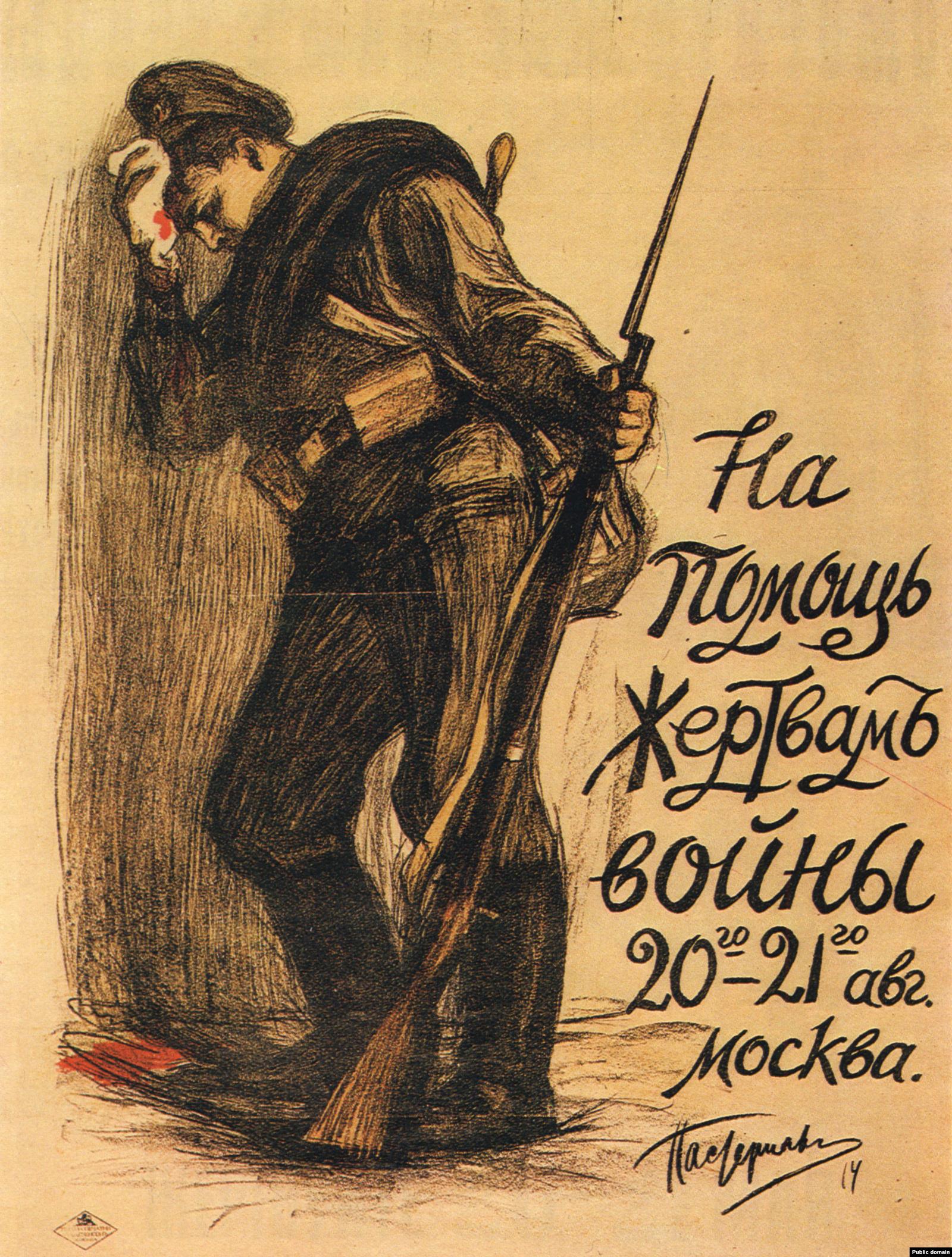
Unlike the steely-faced heroes of Soviet propaganda, some of the tsarist-era posters depict human weakness. This poster advertises a fund-raising rally “to help victims of the war.”
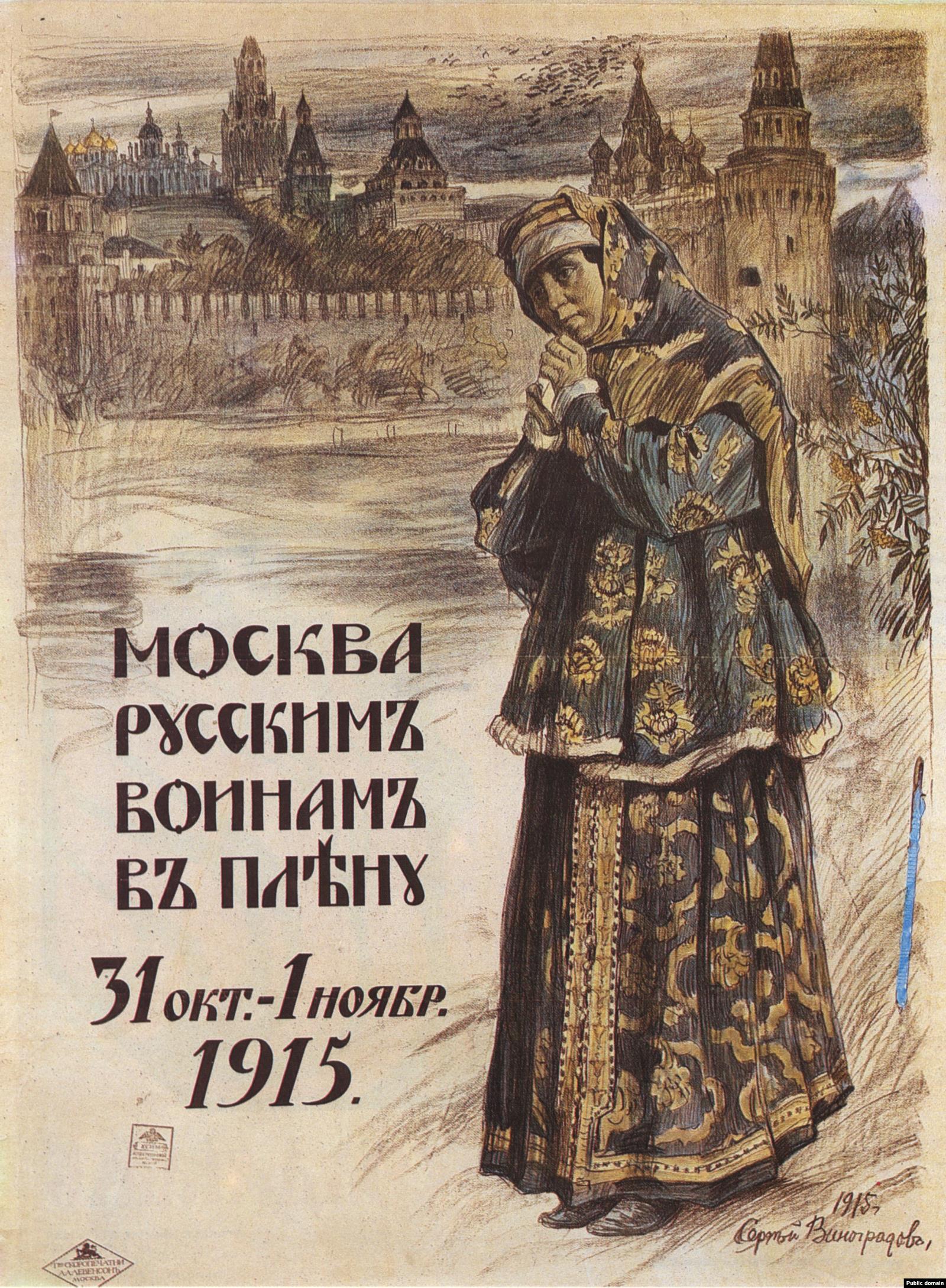
Other posters strike a gentle, religious tone. This image of a woman praying is titled “From Moscow to Russian warriors in captivity.”
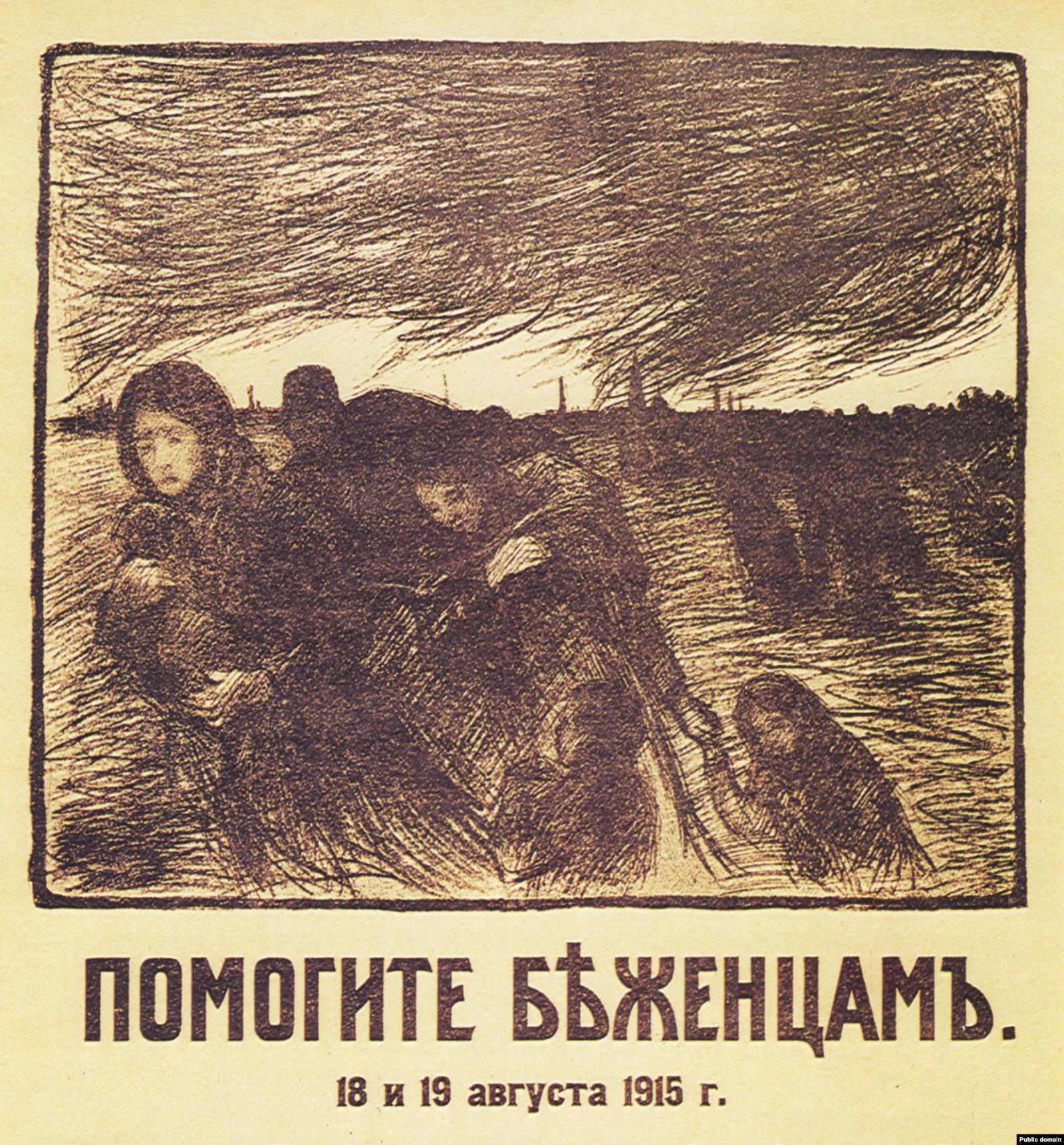
Detail of a poster calling on Muscovites to “help refugees.”
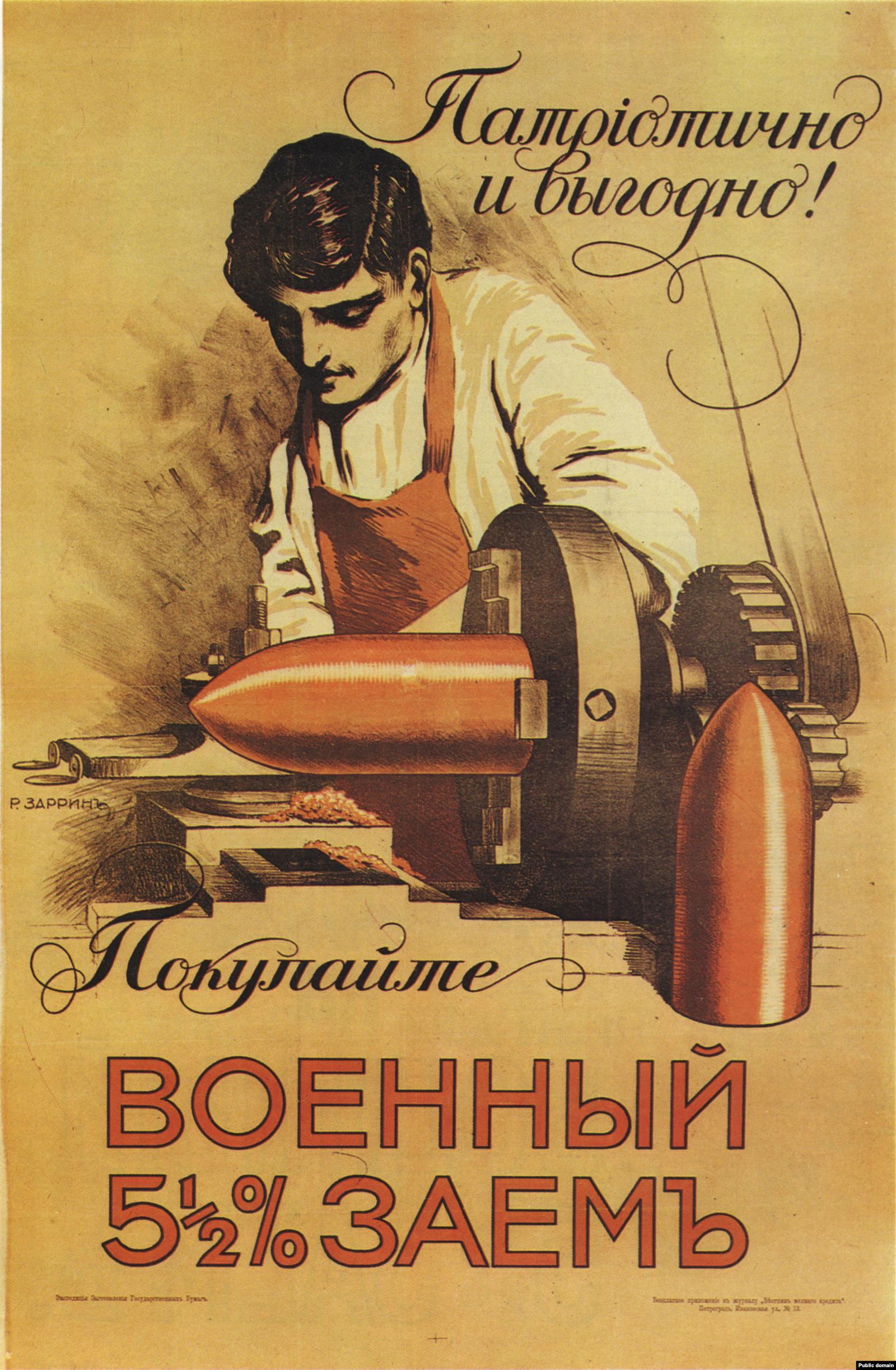
With a vast population (around 126 million, compared to Germany’s 67 million) to draw from, Russia’s need for manpower was less urgent than in other countries. But funding was desperately short. This poster advertises “Patriotic and Profitable” war bonds.

“The more money, the more shells!” exclaims this Russian soldier, advertising the bonds, which promised a return of 5.5 percent.
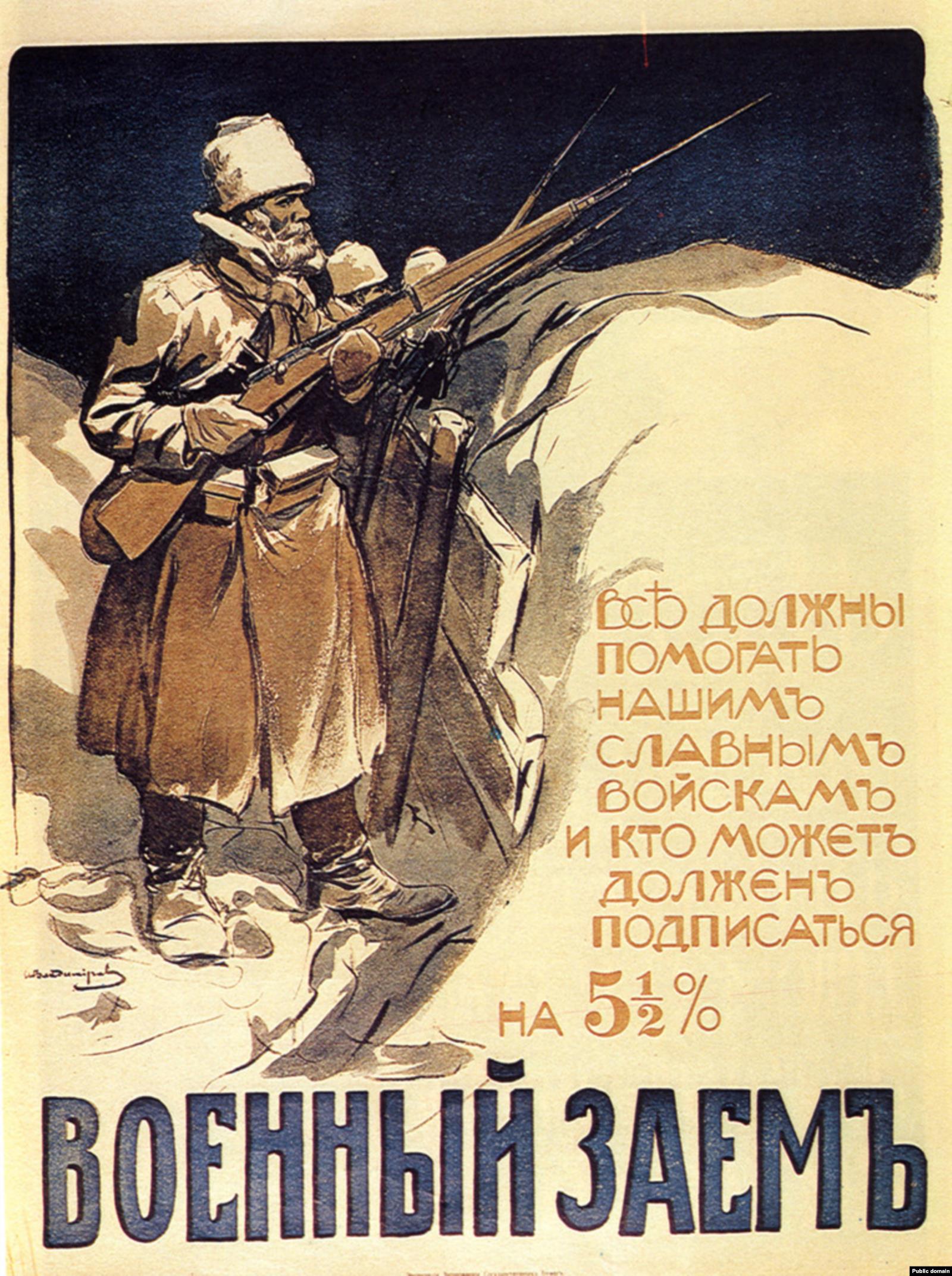
“All must help our glorious troops and those who can must sign for [war bonds].” After the 1917 Bolshevik revolution that swept the tsar from power and pulled Russia out of the war, the bonds became worthless.
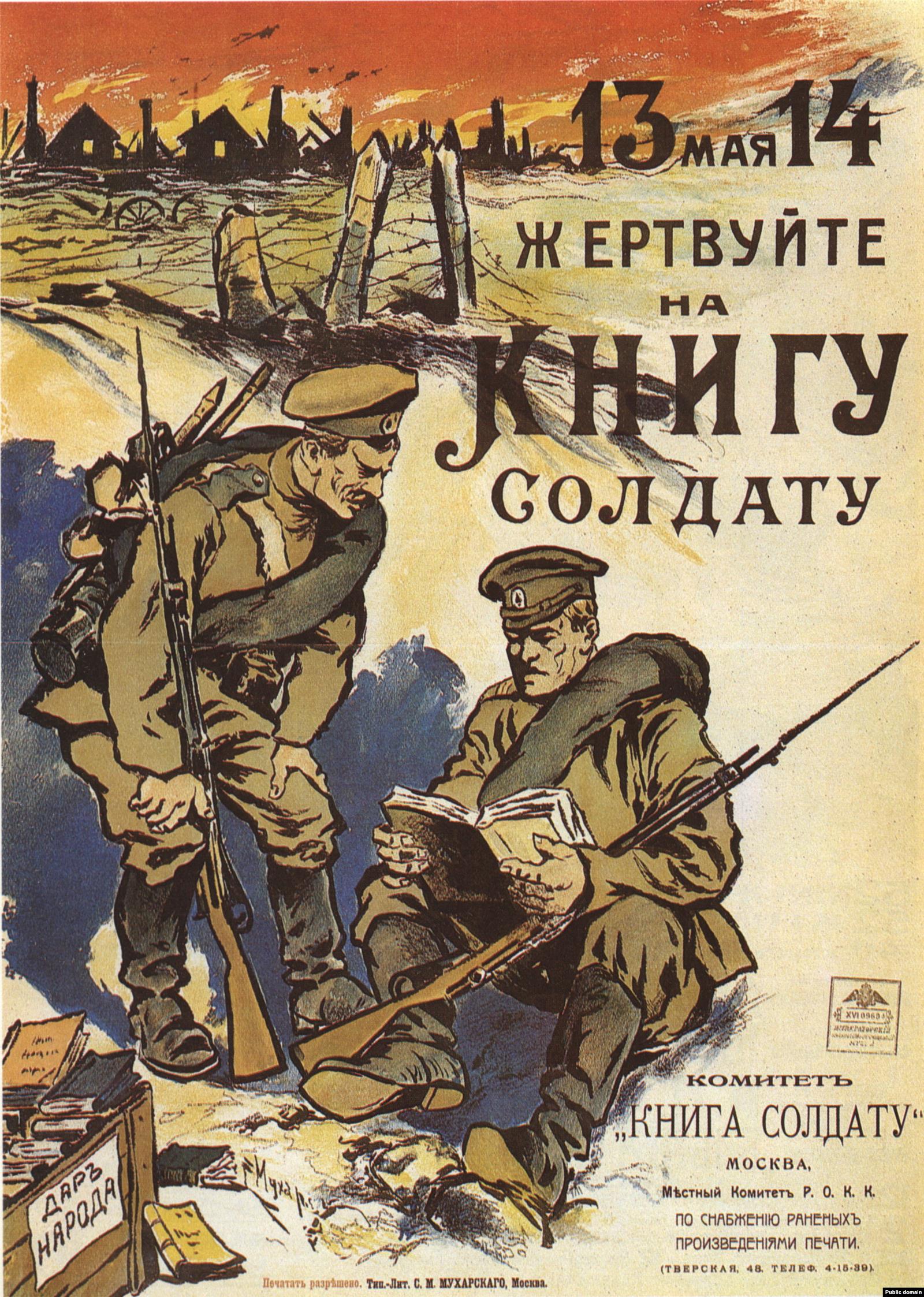
A poster advertising a “Book For A Soldier” committee, which called for Russians to donate books for frontline troops.
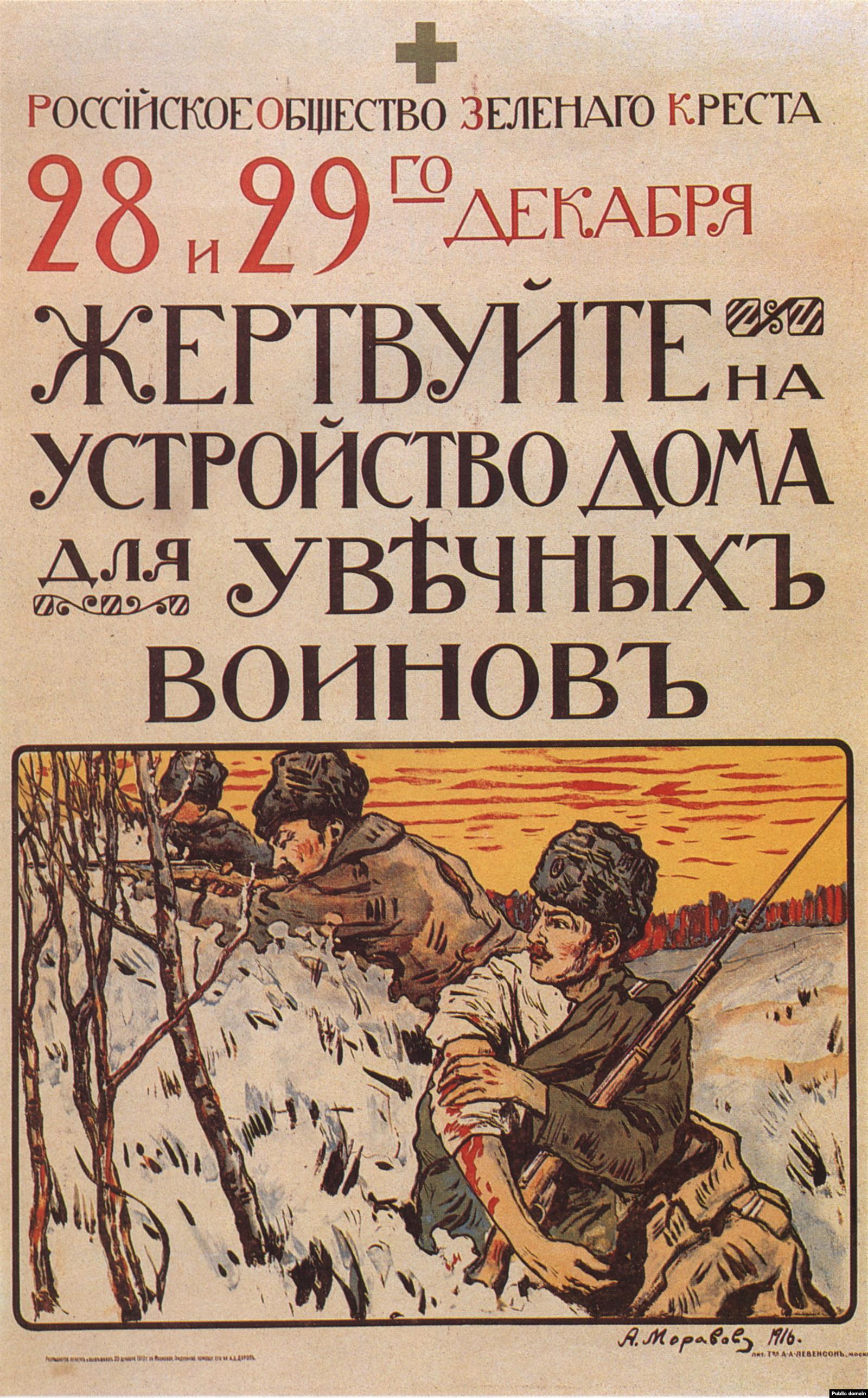
A call for donations for “maimed” fighters. Following the revolution WW1 was largely forgotten, and dismissed by the Soviets as an “imperialist” battle. Around 1.7 million soldiers fighting for the Russian Empire died in the conflict, along with more than 400,000 civilians.